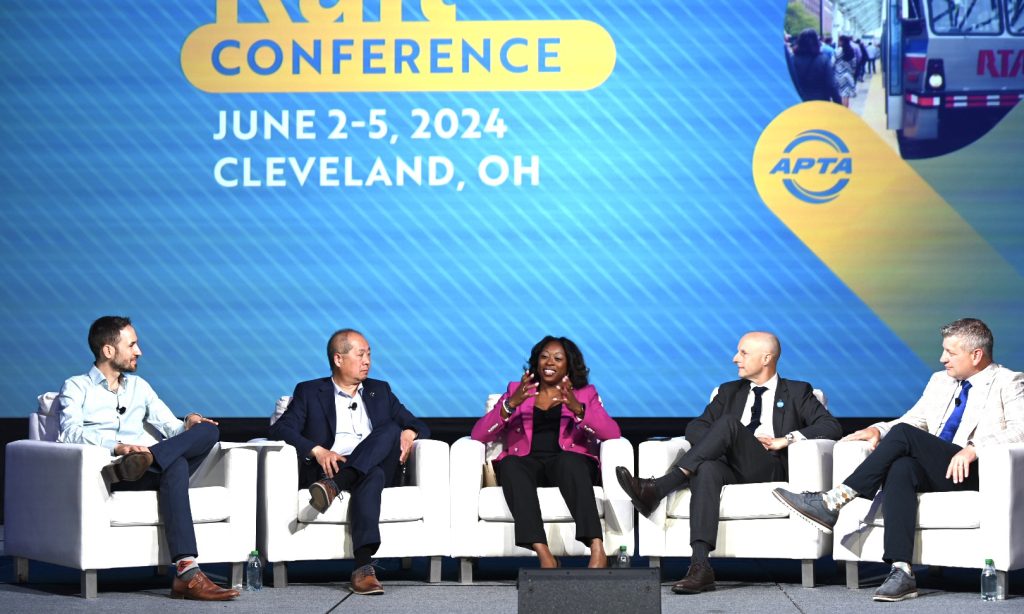Narrative Matters: Project Success Stories Are Built with Community Engagement
6/6/2024
Infrastructure projects are challenging, but ultimately transform communities, so how can public transit agencies keep the project narrative focused on those benefits during construction? Ian Coss, producer of “The Big Dig” podcast about Boston’s Central Artery/Tunnel Project, asked this question at the Transit Megaprojects and the Narrative of Enduring Community Value General Session of the APTA Rail Conference.

“Narrative matters,” he said. Today, the Big Dig’s positive impact is still overshadowed by its boondoggle reputation, in part because of messaging missteps. “I think there’s a real value in telling [a project’s story] and reminding ourselves that these benefits we enjoy today did not come easily. They did not come neatly, and they definitely did not come cheaply.”
Coss invited a panel of infrastructure project veterans to discuss focusing project narratives with messaging, relationships, and “finding the right project.”
Frequent communication is essential, said Phillip Eng, GM & CEO, Massachusetts Bay Transportation Authority. “One of the things that changes a narrative is a lack of information,” he said. People make assumptions. Community outreach helps set public expectations.
Eng advised one-on-one meetings with key community leaders before making public announcements, and Felicia Alexander, deputy assistant secretary for transportation policy, USDOT, agreed. “When you’re intentional in those types of conversations, people really feel heard,” she said. Regardless of the result, “they think, at least you took the time to sit down and have an honest conversation.”
Build relationships with elected officials, supporters, and opponents, advised Ryan Snow, senior VP of strategy at Stacy Witbeck. Meeting with community advisory boards makes people feel invested and valued. “We had community superintendents that were 100 percent focused on just understanding the business’s concerns, and what we learned from that is a staple that we use as an organization today: Happy community, successful project.”
Coss asked how to choose “the right project,” and received a range of answers, but, above all, panelists said, it has to meet the community’s needs, with active outreach and transparent, honest communication.
In addition, said Andy Byford, Amtrak senior VP of high-speed rail development, “What you have to do is really understand, yourself, what the scope of that project is, what the benefits of that project are… then be honest, get your costing right… and you have to have the confidence to believe in it yourself, so that you can prosecute it with purpose.”
STV sponsored the session.
View more images from the conference here.